Lemon Curd
This post may contain affiliate links. Read my full disclosure policy.
Enjoy a taste of sunshine in every spoonful with this lusciously creamy (and easy!) homemade lemon curd.
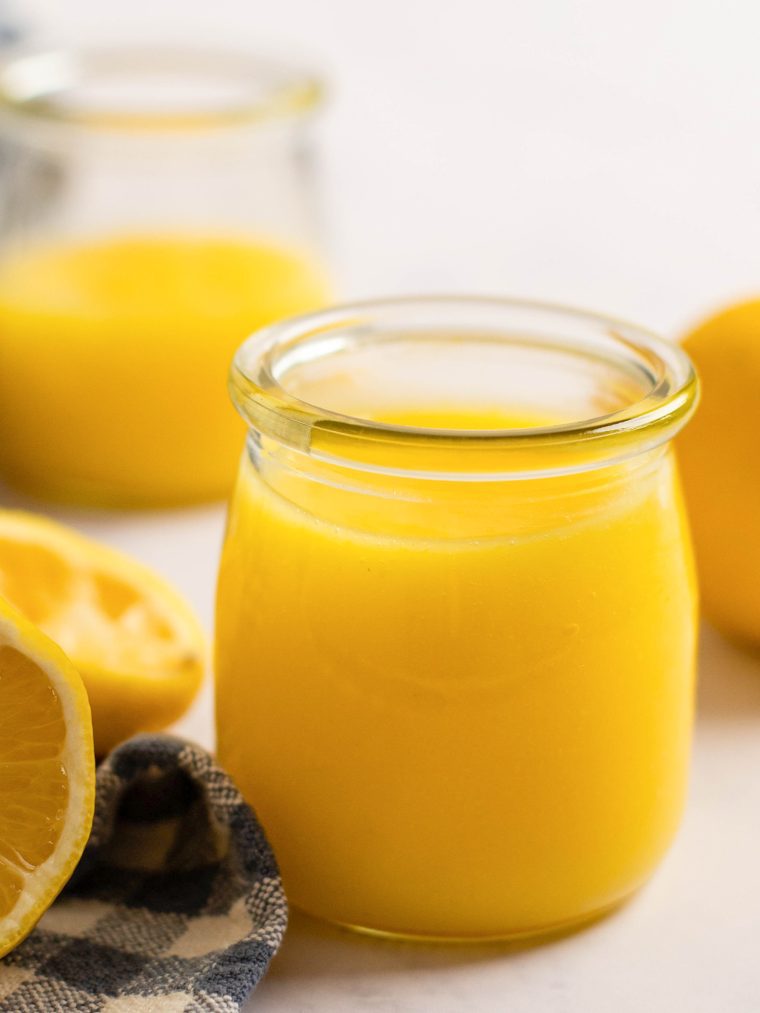
If you share my passion for all things citrus, you’re going to absolutely love this lemon curd recipe. Originating from England, lemon curd is like a burst of sunshine in a jar — bright and lusciously creamy, while striking the perfect balance between tart and sweet.
It’s easy to make with just five simple ingredients and you can enjoy it in so many ways: slather it onto warm toast to kickstart your morning, add a dollop to pancakes or waffles for an indulgent weekend treat, or swirl it into your Greek yogurt for a refreshing start to your day. It even pairs wonderfully with whipped cream and berries for a light summer dessert. Homemade lemon curd also makes a lovely gift. Just spoon the curd into a cute little jar, tie a ribbon around it, and you’ve got a thoughtful present that’s sure to brighten anyone’s day.
Table of Contents
Ways To Use Lemon Curd
- Spread on toast, English muffins, croissants, biscuits, drop biscuits, or scones
- Dollop on waffles, pancakes, or ricotta pancakes
- Use as a filling for French crepes or macarons
- Spoon over pound cake
- Mix with whipped cream for strawberry shortcake
- Mix with homemade whipped cream for fresh berries/dessert topping
- Stir into Greek yogurt
- Use as a filling for tarts and pies
- Spread on cheesecake
- Drizzle over ice cream
What You’ll Need To Make Lemon Curd
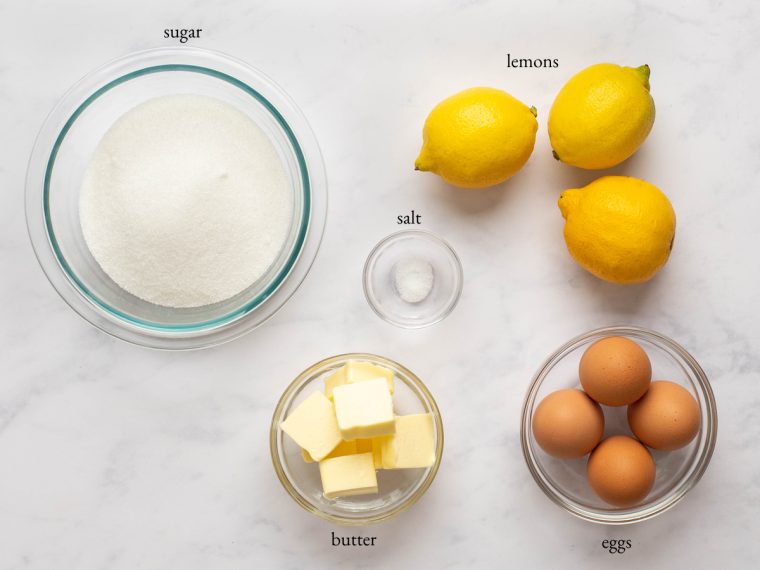
- Sugar: Sweetens the curd and balances the tartness of the lemon.
- Eggs: Provide structure and thicken the curd, giving it a creamy consistency.
- Lemon Zest: Adds a bright, aromatic citrus flavor that intensifies the lemony taste. When zesting lemons or any citrus fruits, avoid the pith—the bitter white layer beneath the zest—as it can add unwanted bitterness to your dish.
- Lemon Juice: Contributes the characteristic tartness and acidity to the curd, complementing the sweetness. To get the most juice from your lemons, give them a vigorous roll on your kitchen counter for a few seconds. This breaks down the citrus membranes, making the juice flow out effortlessly when you squeeze the lemons.
- Salt: Enhances the flavors of the other ingredients and offsets the sweetness.
- Butter: Gives the lemon curd a rich, smooth texture and a glossy finish.
- Jump to the printable recipe for precise measurements
Step-by-Step Instructions
I use Ina Garten’s recipe as a starting point, but my method is simpler and involves much less clean up, creating the most luscious spread without any fuss. One little tip: it’s essential to zest the lemons prior to juicing; attempting to do so afterward can prove quite challenging.
In a medium (2-quart) saucepan, add the sugar, eggs, lemon zest, lemon juice, and salt.
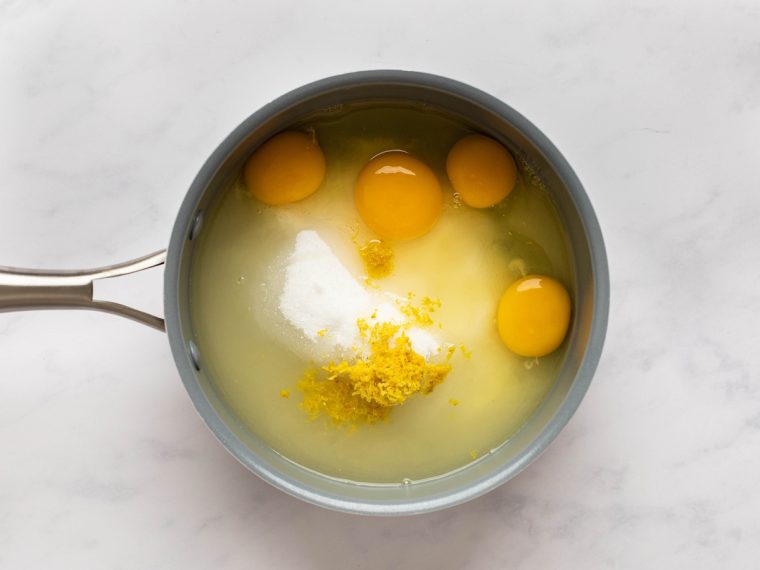
Set the pan over low heat and whisk all ingredients together.
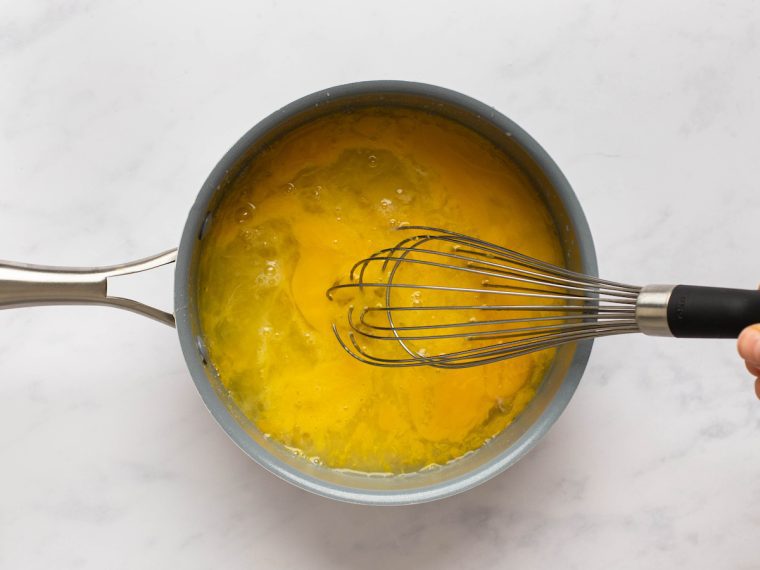
Continue to whisk constantly until the mixture is thickened enough to coat a spoon (about 10 minutes). The lemon curd will thicken at about 170°F or just below a simmer.
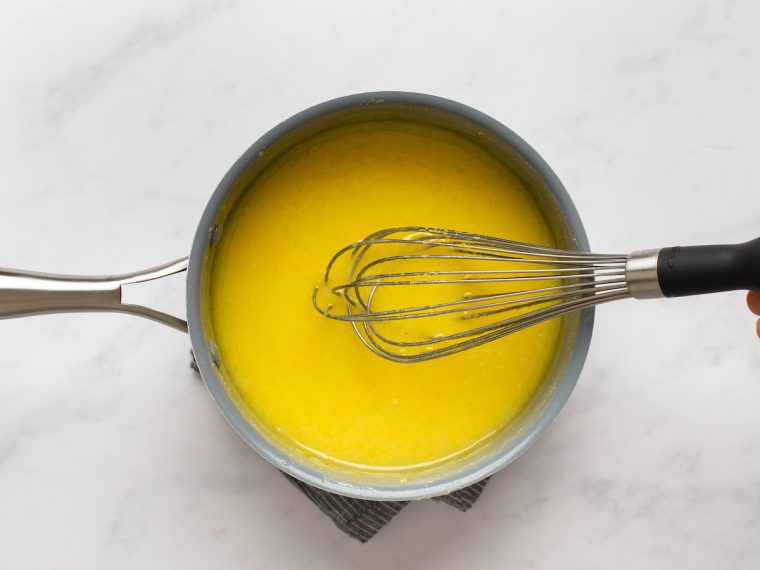
Off the heat, add the butter all at once and whisk until melted and evenly incorporated.
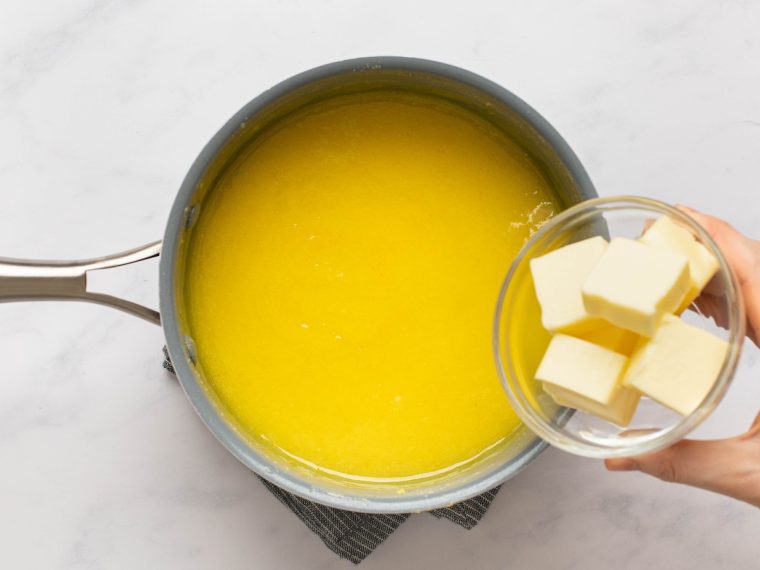
Pass the curd through a fine mesh strainer to remove the lemon zest, if desired.
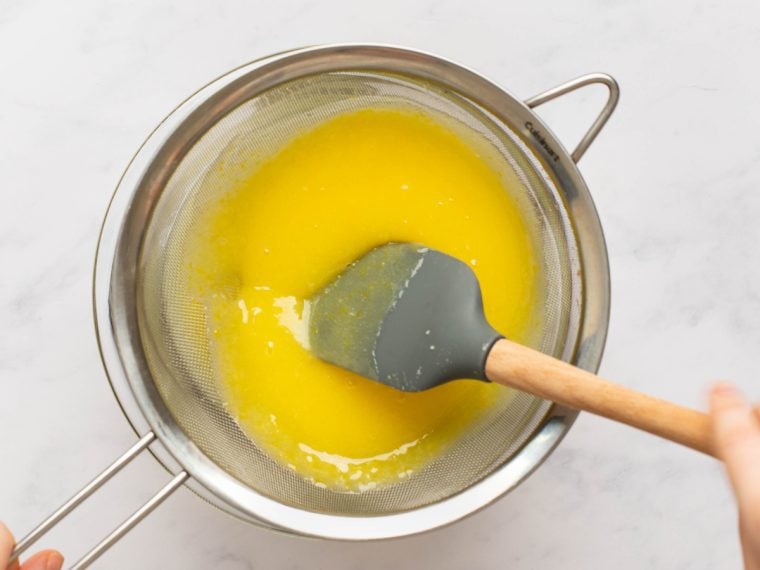
Cover and refrigerate until cool and thickened, at least 4 hours or preferably overnight.
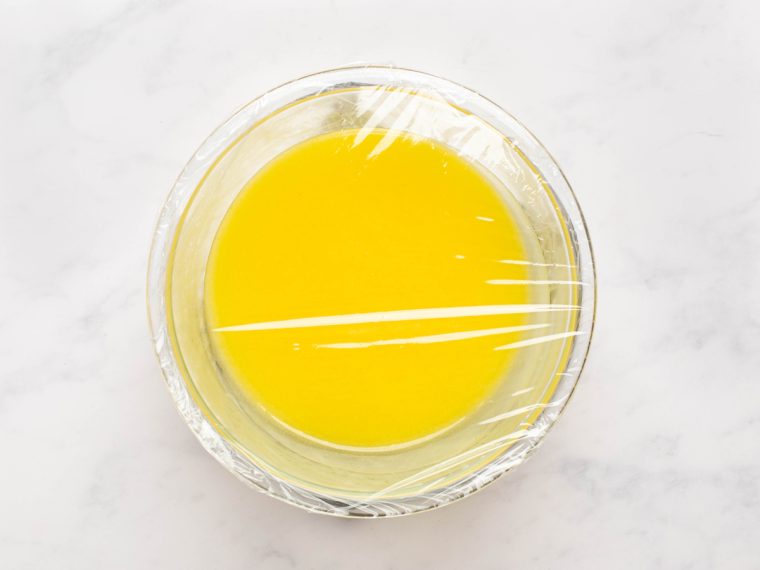
Lemon curd will keep in an air tight container in the refrigerator for about 2 weeks. To freeze for longer storage, transfer the lemon curd to a freezer-safe container, leaving about ½ inch of space at the top to accommodate expansion. Store in the freezer for up to 3 months. When ready to use, thaw the frozen lemon curd overnight in the refrigerator.
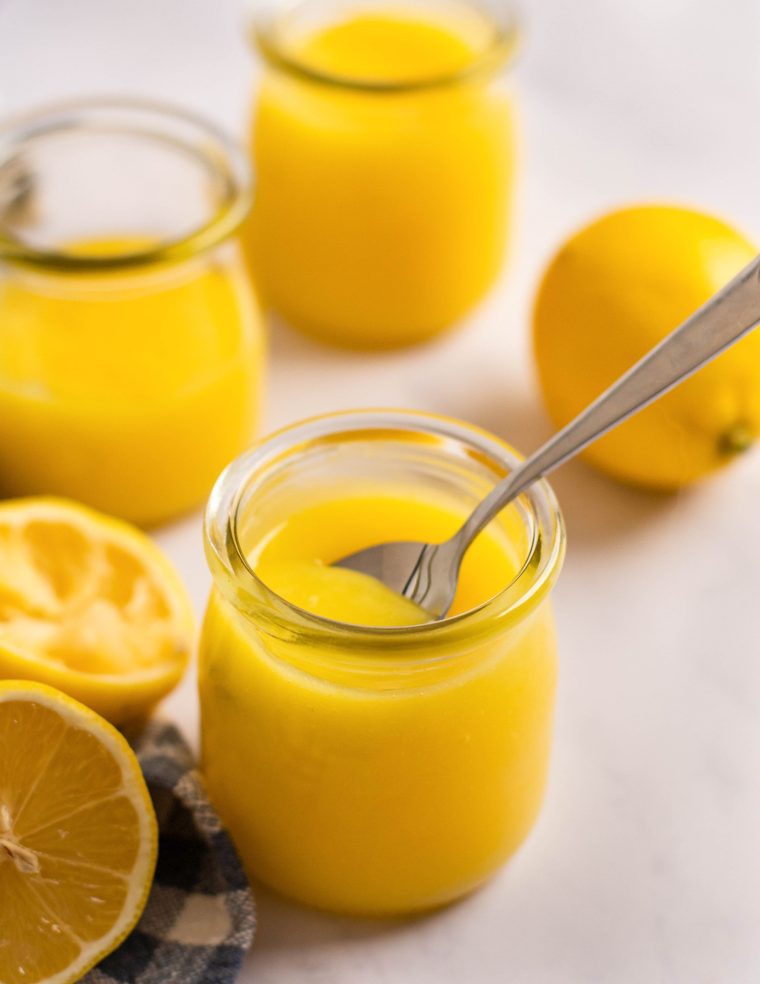
You May Also Like
Lemon Curd
Enjoy a taste of sunshine in every spoonful with this lusciously creamy (and easy!) homemade lemon curd.
Ingredients
- 1½ cups sugar
- 4 large eggs
- 2 teaspoons lemon zest (from 2 lemons)
- ½ cup lemon juice (from 3 lemons)
- ⅛ teaspoon salt
- 1 stick (½ cup) unsalted butter, cut into 8 pieces
Instructions
- In a medium (2-quart) saucepan, whisk together the sugar, eggs, lemon zest, lemon juice, and salt. Set the pan over low heat. Cook, whisking constantly, until the mixture is thickened enough to coat a spoon (about 10 minutes). The lemon curd will thicken at about 170°F or just below a simmer. Off the heat, add the butter all at once and whisk until melted and evenly incorporated. Pass the lemon curd through a fine mesh strainer to remove the lemon zest, if desired. Cover and refrigerate until cool and thickened, at least 4 hours or preferably overnight.
- Make-Ahead/Freezer-Friendly Instructions: Lemon curd will keep in an air tight container in the refrigerator for about 2 weeks. To freeze for longer storage, transfer the lemon curd to a freezer-safe container, leaving about ½ inch of space at the top to accommodate expansion. Store in the freezer for up to 3 months. When ready to use, thaw the frozen lemon curd overnight in the refrigerator.
Nutrition Information
Powered by ![]()
- Serving size: 2 tablespoons
- Calories: 95
- Fat: 5 g
- Saturated fat: 3 g
- Carbohydrates: 13 g
- Sugar: 13 g
- Fiber: 0 g
- Protein: 1 g
- Sodium: 25 mg
- Cholesterol: 41 mg
This website is written and produced for informational purposes only. I am not a certified nutritionist and the nutritional data on this site has not been evaluated or approved by a nutritionist or the Food and Drug Administration. Nutritional information is offered as a courtesy and should not be construed as a guarantee. The data is calculated through an online nutritional calculator, Edamam.com. Although I do my best to provide accurate nutritional information, these figures should be considered estimates only. Varying factors such as product types or brands purchased, natural fluctuations in fresh produce, and the way ingredients are processed change the effective nutritional information in any given recipe. Furthermore, different online calculators provide different results depending on their own nutrition fact sources and algorithms. To obtain the most accurate nutritional information in a given recipe, you should calculate the nutritional information with the actual ingredients used in your recipe, using your preferred nutrition calculator.

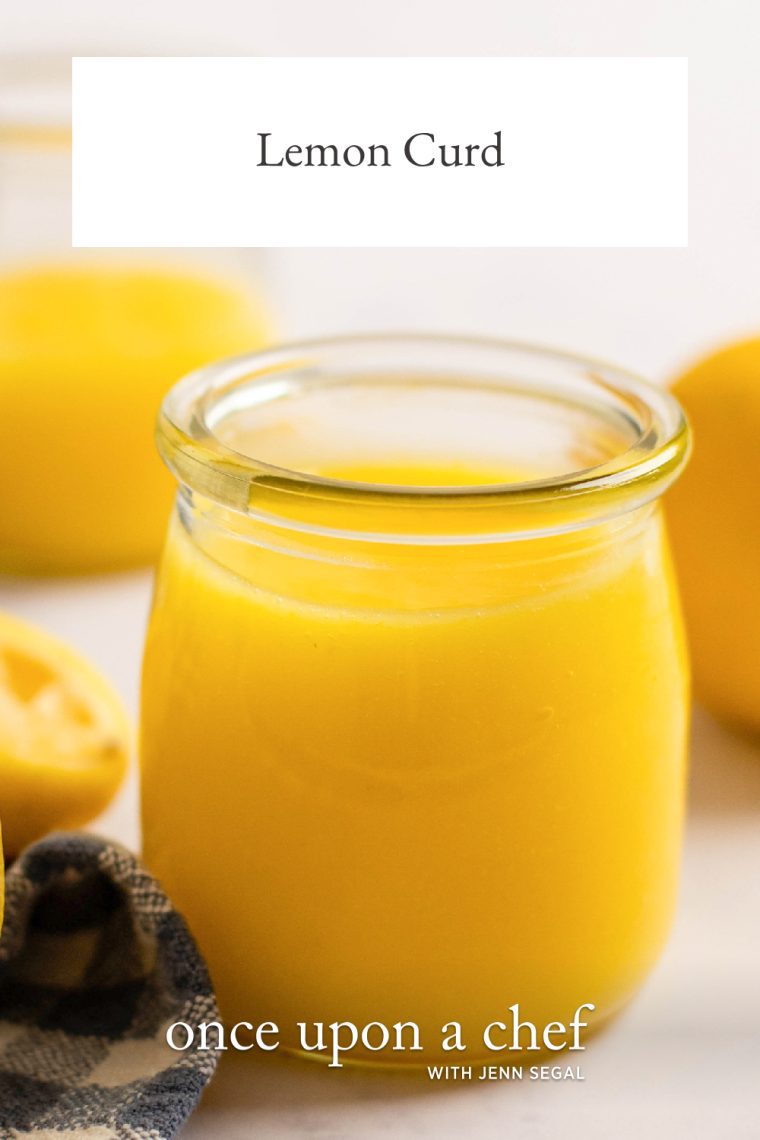
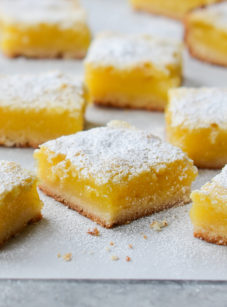
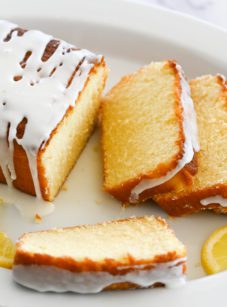
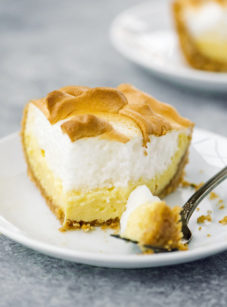

Hello, Jenn
I would love to make your delicious sounding lemon curd with oranges instead –
is it just as easy as switching out the lemons? or do I need to adjust sugar as oranges are sweeter? or should I just not touch your 5 star recipe and find one that is for orange curd?
With big thanks, 😀 Sally
Hi Sally, for the most predictable results, I think I’d look for a recipe for orange curd. Sorry!
Thanks, Jenn – I did but it or I failed with it — next time I’ll make it lemon curd and your recipe as they are always a success!
Just finished making this recipe! So good!
Hi, Jenn.
Another very successful recipe.
I used a microplane grater for the zest, and didn’t strain it. Except for the flavor, you can’t tell it’s there.
It was just slightly on the thin side, after 24+ hrs of refrigeration. Would simmering it longer rectify that, or ruin it?
Thanks,
Joe
Hi Joe, I think it should be okay to simmer it a little longer. I’d love to hear if that works for you!
It shall be done, “She-who-must-be-obeyed”.
Probably this weekend.
J
🤣
Made the second batch yesterday, and it’s been chilling for about 20 hours. I tipped the jars, and it’s a lot less pour-y (yes, that’s a word; why do you ask?) than the first batch.
I simmered it, not so much longer, as hotter. My stove (gas) doesn’t do “low heat” real well, so I used a heat diffuser the first time. Took forever (read “35 minutes”) to thicken. This time, I dispensed with the diffuser, and turned up the heat, just a little. Took about 15 minutes for perfection.
Thanks a lot for what you do, and the fact that you answer the questions in the comments.
Joe
Glad the consistency was better this time and why you experienced problems on the first go-round. And for the record, I think pour-y is definitely a word. 🤣
Without a doubt this is the best lemon curd I have ever tasted. Sweet and tart at the same time.
I’ll be making this lemon curd often, it’s so delicious and much easier than the cumbersome recipe I’ve been using for years. Thank you for a swift and tasty treat!
Hi Jen!
The curd tasted lovely but mine was on the thin side. It did reach 170 degrees., any thoughts as to what to do differently?
Thanks!
Janine
Hi Janine, Was it thin once chilled or just when warm?
It seemed thinner once chilled
That’s really strange because it really should thicken up when cold. I suspect it was a bit undercooked so next time, let it cook a bit longer before removing from the heat.
Hi Jenn, thanks so much for the recipe. It was easy to make, however, mine turned out a bit thin, still tastes great and is the same color. Do you think I undercooked it? I didn’t want to boil it and timed to about 12 min, but it’s a bit runny. Thank you
Hi Nargiza, Sorry it came out a little thin. It sounds like maybe it needed to cook just a bit longer. Glad it tasted good though!
Where did you find the cute jars?
They came from Amazon. 🙂
Can you use coconut oil instead of butter?
Because I’ve never made it with coconut oil, I’d be hesitant to suggest it. I’d look for a recipe that uses coconut oil instead. Sorry!
Question: I have a Meyer lemon tree and I find the lemons are not as acidic as store bought Eureka lemons. Will they work for this curd? Thanks!
Hi Glen, I think it should be fine, but you could reduce the sugar just a bit to make it a little more tart. I’d love to hear how it turns out if you make it!
I make mine with only egg yolks, more intense! Sometimes I mix with mascarpone and top with raspberries.
Love your recipes, they always turn great.
Yes! I’m looking to use the curd with a pavlova and will have yolks going wanting!! I’m going to try this. Thanks!!